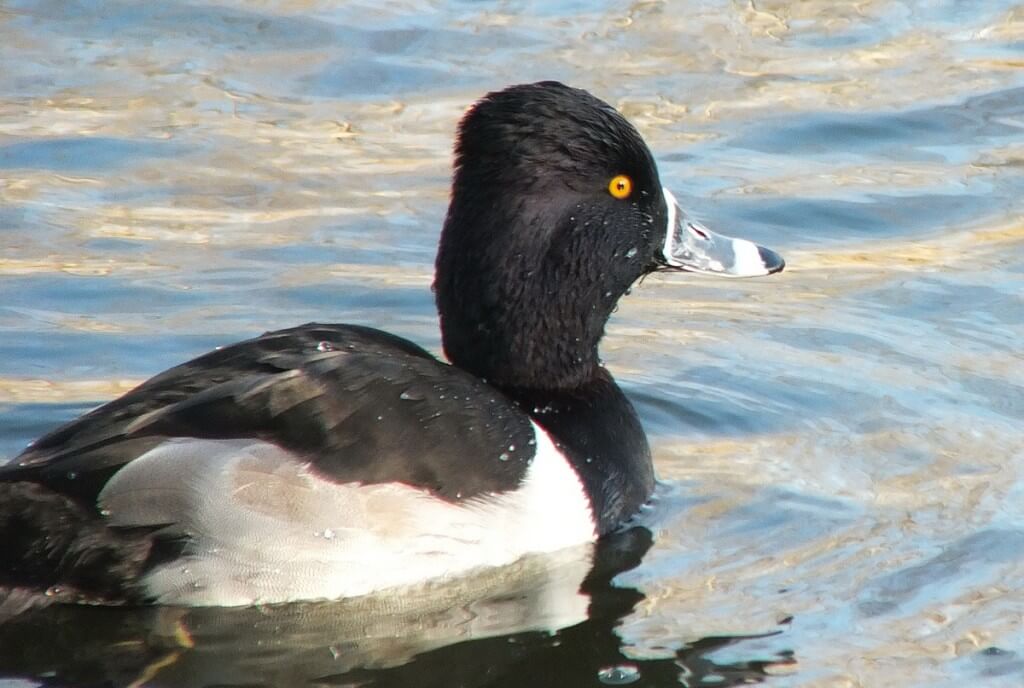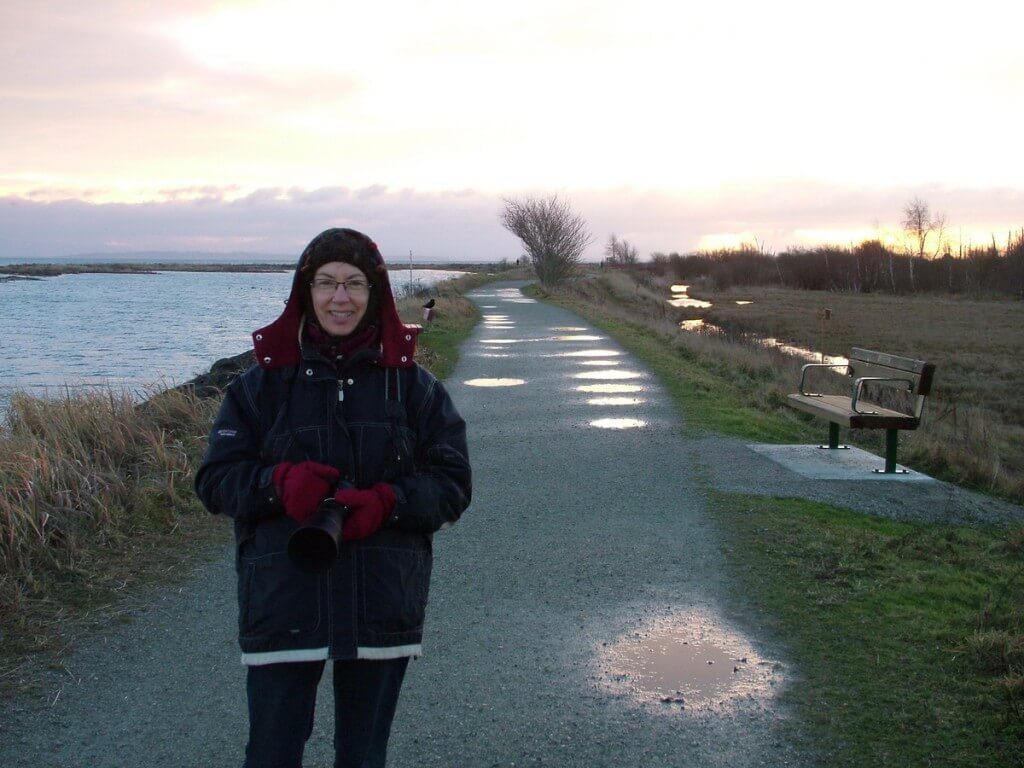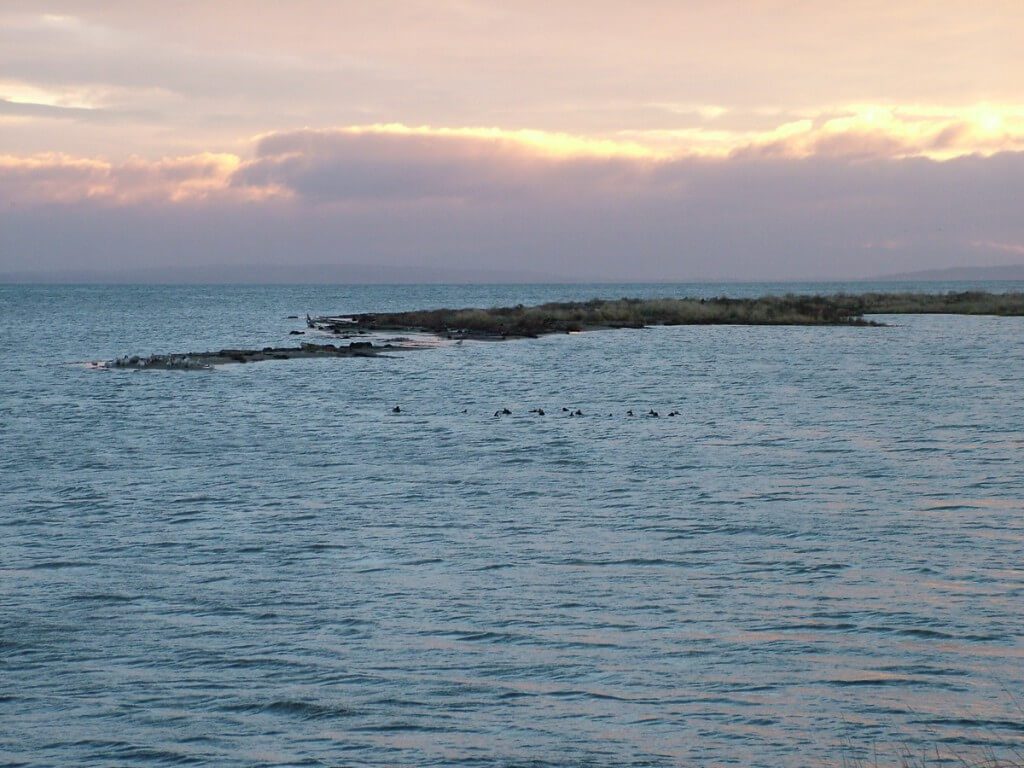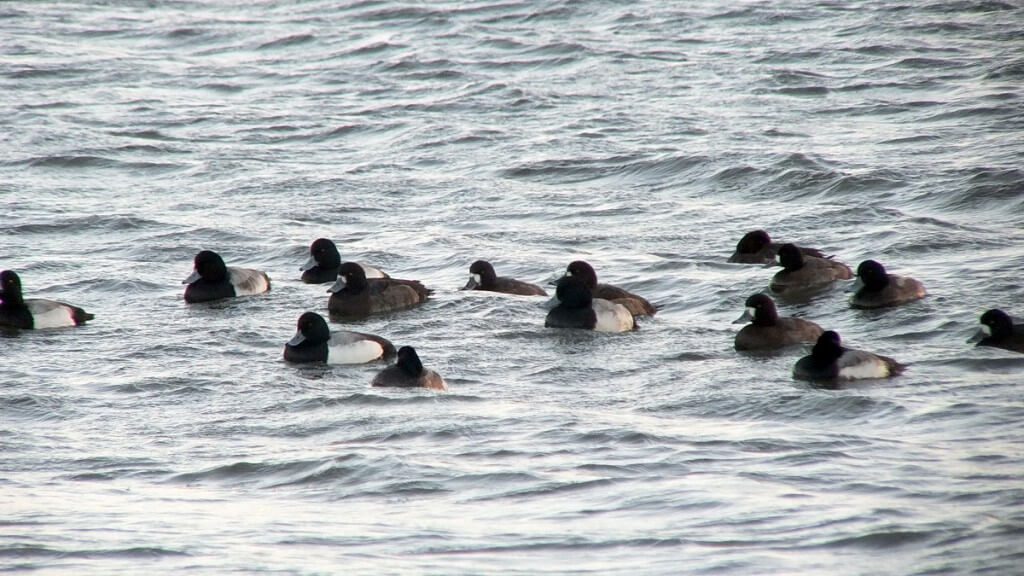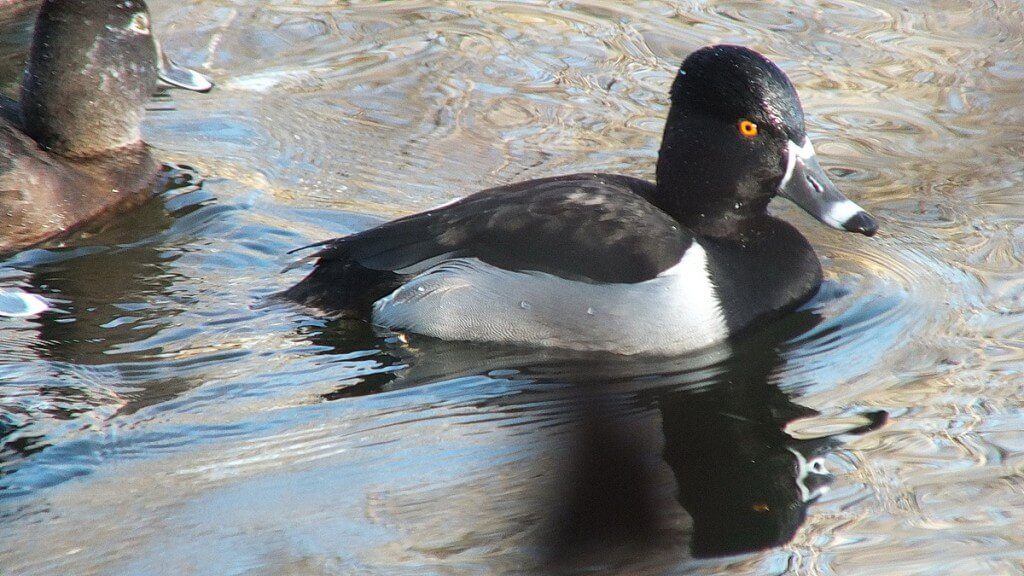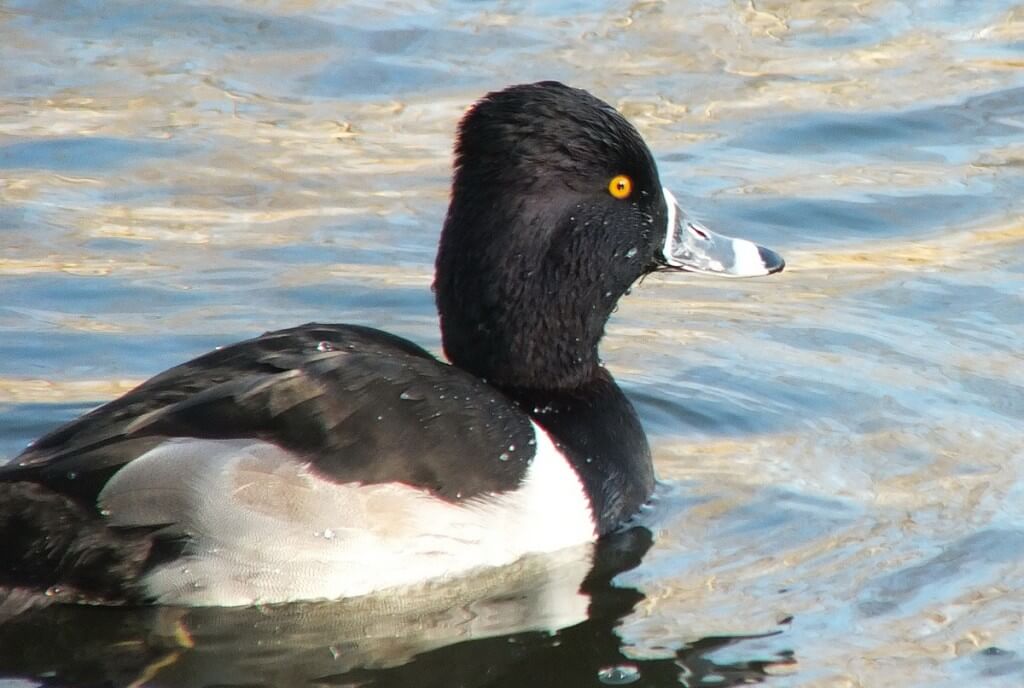Ring-necked Ducks at Boundary Bay, BC
On a trip to British Columbia, Bob and I scheduled a hike at Boundary Bay Regional Park in the Delta and Tsawwassen regions south of Vancouver. Due to the effects of time change, on the first morning of the trip, Bob and I found ourselves awake bright and early, so hit the trails at the north end of the conservation area by 8 a.m. We were pleased to spot, right off, a bevy of Ring-necked Ducks (Aythya collaris) tucked into a sheltered cove on the west side of Boundary Bay.
Boundary Bay is located on the Pacific coast of North America near the border between the province of British Columbia, Canada, and the state of Washington, United States of America. The Bay is recognized internationally as a significant bird area on the Pacific Flyway migration route.
Being unfamiliar with the trail system, Bob and I decided to follow the well-traveled route that hugs the shoreline. I believe, in hindsight, that that trail is called the Dune Trail. I guess we weren’t thinking clearly that morning because our decision had us walking directly towards the rising sun. Its weak rays failed to warm us against the chilly onshore breeze, but we were grateful for any sunshine since the forecast had been for another rainy day.
A pastel pink sky was the beautiful backdrop for our avian observations that morning, and there were tons of waterfowl to be checked out. The park was well attended by joggers, dog walkers and fellow birders, each one quick to offer a friendly smile and Happy New Year greeting.
One particular flock of ducks seen floating idly out in the Bay casually drifted close enough to shore for a few photographs. Unlike most diving ducks, Ring-necked Ducks are not often found far out on large expanses of open water. In fact, they prefer to dabble in shallow fresh water of marshes, sedge meadows and bogs, as well as tidal estuaries and bays where they can feed on such things as tubers, seeds and leaves of aquatic plants, however they also consume insects, snails and clams.
This male Ring-necked Duck is in full breeding plumage even though it was early January when we came across the flock wintering in southwestern British Columbia. It is the barely visible chestnut-coloured ring around the black neck of the breeding male that gives the Ring-necked Duck its name. Together with a peaked, angular head profile, males exhibit a bright yellow eye with a bill that is dark slate in colour contrasted by a bluish white band near its end and a narrow whitish margin at its base and edges.
The head and neck of a female is greyish brown showing darkest on the crown, and the area behind the base of the bill, the narrow eye-ring and chin are all whitish in colour. A pair of female and male Ring-necked Ducks begins bonding during spring migration. Any unpaired ducks arriving at the breeding grounds are most likely non-breeders.
It was easy to see that the period for migration had not yet begun because at the peak of that event, more than 100,000 birds representing over 333 species can be counted in the Bay. Ring-necked Ducks breed in central and the southern interior of the province where they will nest on low vegetated margins of open water such as bogs, beaver ponds, swamps and sloughs. I wonder when this flock of ducks will move inland. At that time, they, themselves, may group into flocks of between several to several thousand as they head to their breeding habitat.
Frame To Frame – Bob and Jean

